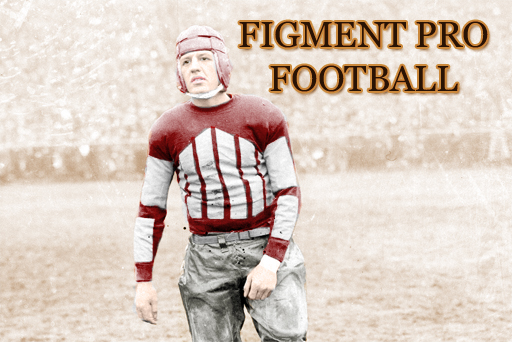The Chicago Wildcats were a charter member of the AFA. Of those original clubs from 1920, only the Wildcats, the Dayton Dusters and the Cleveland Finches were still around in '28 (though the Detroit Maroons would argue that they were also a charter member - having their roots in Rochester in 1920, but that team folded and was reformed in Detroit as a new entity - according to the AFA - so to this day people still argue the matter). The Wildcats had often been among the AFA's best clubs but 1928 might have been their best year yet.
Coach-owner-and-end Carl Boon was still playing. His former partner, Joe Barrell, had retired the previous year and gone to California to play Tarzan in the movies. But Joe's brother, Jack Barrell was back in the fold after running the Chicago Chiefs of the FAA for a year, and teaming with Harry Alexander and Tom Carroll in the backfield running behind a line that boasted such stalwarts as Neil Robirds and Rufus Gill, the Wildcats were nearly unstoppable.
The 1926 season had been a financial bloodbath and only the strongest clubs survived. There had been 31 "top" pro teams in 1926, with 22 in the bloated AFA and 9 more in the upstart FAA. The FAA had disappeared, and most of the players who had jumped ship had been brought back into the fold (if their former teams found them necessary) or simply been blackballed - then, as now, talent would supersede most personal faults. Sanity - at least in terms of the number of pro teams - returned after several years of oversaturation which brought with it extremely uneven play. Though the carousel of teams coming & going wasn't quite stopped just yet, it had slowed down a bit.
The AFA cut down to 10 teams, then added two more. One came from the enemy camp, as the New York Gothams were accepted over the objection of the New York Stars. And the former Toledo Tigers returned in a new place, as they signed on some former Pittsburgh Pros and moved the team to the Steel City as the Pittsburgh Bulldogs. Most of the small city teams were now gone, with Dayton being the last holdout of the old core of smaller cities that had been the basis for the AFA's founding back in 1920. The other cities were Baltimore, Boston, Chicago, Cleveland, Detroit, New York (twice) and Philadelphia. All the teams - except Buffalo, Dayton and Milwaukee - were now playing in the large, relatively modern ballparks of the Federally Aligned Baseball Leagues with single-use stadia being a far-off dream for gridiron owners.
